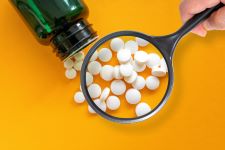
J. David Legan, PhD
Director of Science
David earned his Ph.D. in Food Technology from the University of Reading in the UK by modeling the ecology of mixed microbial populations, and then moved to Campden BRI in a variety of microbiological food safety research and client service roles. During that time, he was project lead for the Bacillus component of the UK’s pathogen modeling program. He moved again to Nabisco Research in New Jersey where he ran the corporate microbiology lab and developed a program of preservation technology development and microbial modeling. After the Kraft Foods acquisition, he moved to Chicago to work on Food Safety and Preservation research, and through modeling and validation studies:
- Optimized Oscar Mayer’s use of lactate and diacetate and their naturally cultured alternatives as Listeria-control agents in Ready to Eat meats
- Specified process conditions central to Oscar Mayer’s commercial launch of High Pressure Pasteurization of naturally cured RTE meats
David had responsibility for the Kraft cultures R&D group, developed a partnership to explore microwave sterilization leading to several patents, and led a program that developed an internal proprietary natural antimicrobial commercialized in several Kraft products. Technologies from his group supported approximately $4 billion in annual sales.
After years as a microbiology "client", he is now back in the "provider" role as Director of Science at Eurofins Microbiology Laboratories, Inc., by way of the Covance Food Solutions group based in Madison, WI, which he joined in 2016. In this role, he ensures appropriate method validation, explores new testing technologies, and fields multiple complicated food microbiology questions.
Products that his team has evaluated or developed and launched include:
- The 3M MDS platform in the Madison microbiology laboratory
- Flow cytometry for enumeration of probiotics
- Strain-level confirmation of probiotic identification using the polymerase chain reaction (PCR)
- Next-generation sequencing using the Oxford Nanopore Technologies GridION sequencing platform for microbial identification and microbiome analysis
Below are resources from David:
In today’s food, dietary supplement, and beverage industry, ensuring accurate sugar content in products is more important than ever. With increasing consumer awareness about nutrition and stricter regulatory requirements, companies must verify and control the levels of sugars present in their products. Sugar testing plays a vital role in maintaining product quality, meeting labeling regulations, and supporting claims such as “low sugar,” “no added sugar,” and “zero sugar.” This blog explores the different types of sugars and sweetener alternatives and considerations when submitting products for testing.
Ensuring the safety and quality of dietary supplements is a cornerstone of regulatory compliance. Among the most critical steps in this process is establishing specifications for chemical contaminants. These contaminants, which can arise from raw materials, manufacturing processes, or environmental exposure, must be controlled to meet the standards outlined in the Code of Federal Regulations (CFR). This guide is designed to assist manufacturers in establishing strong chemical contaminant specifications while ensuring regulatory compliance.
The botanical supplement and cosmetic industries are rapidly changing, and the increase in consumer demand calls for upscaling raw material sourcing. This means there is higher pressure for scientifically-valid contaminant testing, including screens for pesticides and heavy metals, while maintaining a fast turn-around time. Watch this webinar to learn modern approaches to contaminant detection, with an emphasis on market trends, broad dietary supplement applications, and OTC cosmetics.
This webinar focuses on best practices for testing dietary supplements with a focus on using scientifically valid test methods. Original air date: April 25, 2022
This presentation reviews sample quality criteria, and the parameters that should be considered in order to produce meaningful and defensible measurement data. A review of the purpose of standardized methods is also presented, and considerations for when it is necessary to apply a modified procedure or an alternate method.







